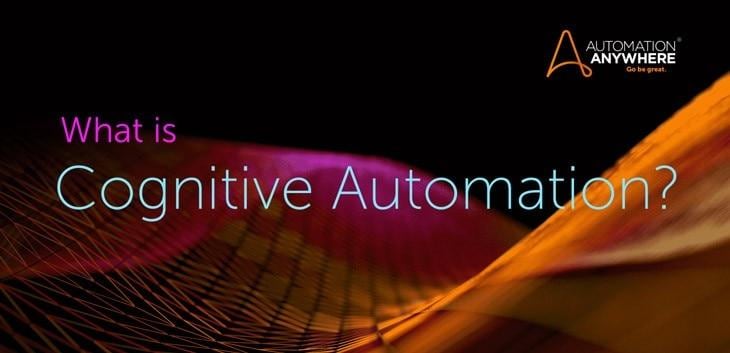- Login
- Search
- Contact Us
-
Have a question? Our team is here to help guide you on your automation journey.
-
Explore support plans designed to match your business requirements.
-
How can we help you?
-
- AI
AI Without the Hype From pilot to full deployment, our experts partner with you to ensure real, repeatable results. Get Started
- Automation Anywhere AI
-
- Solutions
Featured Agentic Solutions
Accounts Payable Invoice automation—No setup. No code. Just results. Accounts Payable
Customer Onboarding Scale KYC/AML workflows. Customer Onboarding
Customer Support Keep queues moving, even at peak load. Customer Support
Healthcare RCM Revenue cycle management that runs itself. Healthcare RCM
- Products
Platform Features
- Agentic process automation (APA)
- Robotic Process Automation (RPA)
- View all Products
-
- Resources
Get Community Edition: Start automating instantly with FREE access to full-featured automation with Cloud Community Edition.
Featured
 Named a 2025 Gartner® Magic Quadrant™ Leader for RPA.Recognized as a Leader for the Seventh Year in a Row Download report Download report
Named a 2025 Gartner® Magic Quadrant™ Leader for RPA.Recognized as a Leader for the Seventh Year in a Row Download report Download report- Become an Expert
- Developer Tools
- Get Support
- View all resources
-
- Partners
Find an Automation Anywhere Partner Explore our global network of trusted partners to support your Automation journey Find a Partner Find a Partner
- Find a Partner
- For Partners
-
Blog
What Is Cognitive Automation? A Primer
Anyone who has been following the Robotic Process Automation (RPA) revolution that is transforming enterprises worldwide has also been hearing about how artificial intelligence (AI) can augment traditional RPA tools to do more than just RPA alone can achieve.
You might even have noticed that some RPA software vendors — Automation Anywhere is one of them — are attempting to be more precise with their language. Rather than call our intelligent software robot (bot) product an AI-based solution, we say it is built around cognitive computing theories.
But is that any clearer? What is cognitive automation? Confusion abounds. Let’s try and dispel some of it.
Deloitte defines cognitive automation as a subset of AI technologies that mimic human behavior: “RPA together with cognitive technologies such as speech recognition and natural language processing automate perceptual and judgment-based tasks once reserved for humans.”
IBM takes that definition and adds to it, defining cognitive computing as differing from AI in how it is used: “In an artificial intelligence system, the system tells a doctor which course of action to take based on its analysis. In cognitive computing, the system provides information to help the doctor decide.”
Combining these two definitions together, you see that cognitive automation is a subset of artificial intelligence — using specific AI techniques that mimic the way the human brain works — to assist humans in making decisions, completing tasks, or meeting goals.
Cognitive automation: AI techniques applied to automate specific business processes
Unlike other types of AI, such as machine learning, or deep learning, cognitive automation solutions imitate the way humans think. This means using technologies such as natural language processing, image processing, pattern recognition, and — most importantly — contextual analyses to make more intuitive leaps, perceptions, and judgments.
Cognitive automation is gaining steam. According to IDC, in 2017, the largest area of AI spending was cognitive applications. This includes applications that automate processes that automatically learn, discover, and make recommendations or predictions. Overall, cognitive software platforms will see investments of nearly $2.5 billion this year. Spending on cognitive-related IT and business services will be more than $3.5 billion and will enjoy a five-year CAGR of nearly 70%.
Also, according to IDC, the cognitive applications that will see the most traction in the coming year are quality management investigation and recommendation systems; diagnosis and treatment systems; automated customer service agents; automated threat intelligence and prevention systems; and fraud analysis, and investigation. These five areas will capture nearly 50% of all cognitive spending.
Another way to think about cognitive automation is that it learns at least in part by association. It takes unstructured data and uses that to build relationships and create indices, tags, annotations, and other metadata. It tries to find similarities between items pertaining to specific business processes — invoices, purchase order numbers, shipping addresses, assets, liabilities, etc. Some of the questions that it uses to build these relationships include:
- Have I seen this before?
- What was done in a similar instance?
- Is it connected to something I have seen before?
- What is the strength of that connection?
- Who/what is involved?
There are a number of advantages to cognitive automation over other types of AI. Among them are the facts that cognitive automation solutions are pre-trained to automate specific business processes and hence need fewer data before they can make an impact; they don’t require help from data scientists and/or IT to build elaborate models. They are designed to be used by business users and be operational in just a few weeks.
The coolest thing is that as new data is added to a cognitive system, the system can make more and more connections. This allows cognitive automation systems to keep learning unsupervised, and constantly adjusting to the new information they are being fed.
Accelerate your journey to cognitive automation.
About Manish Rai
Manish Rai is vice president of product marketing. He focuses on cognitive automation, artificial intelligence, RPA, and mobility.
Subscribe via Email View All Posts LinkedInAuthor's recent posts
Get to know the Agentic Process Automation System.

For Students & Developers
Start automating instantly with FREE access to full-featured automation with Cloud Community Edition.



